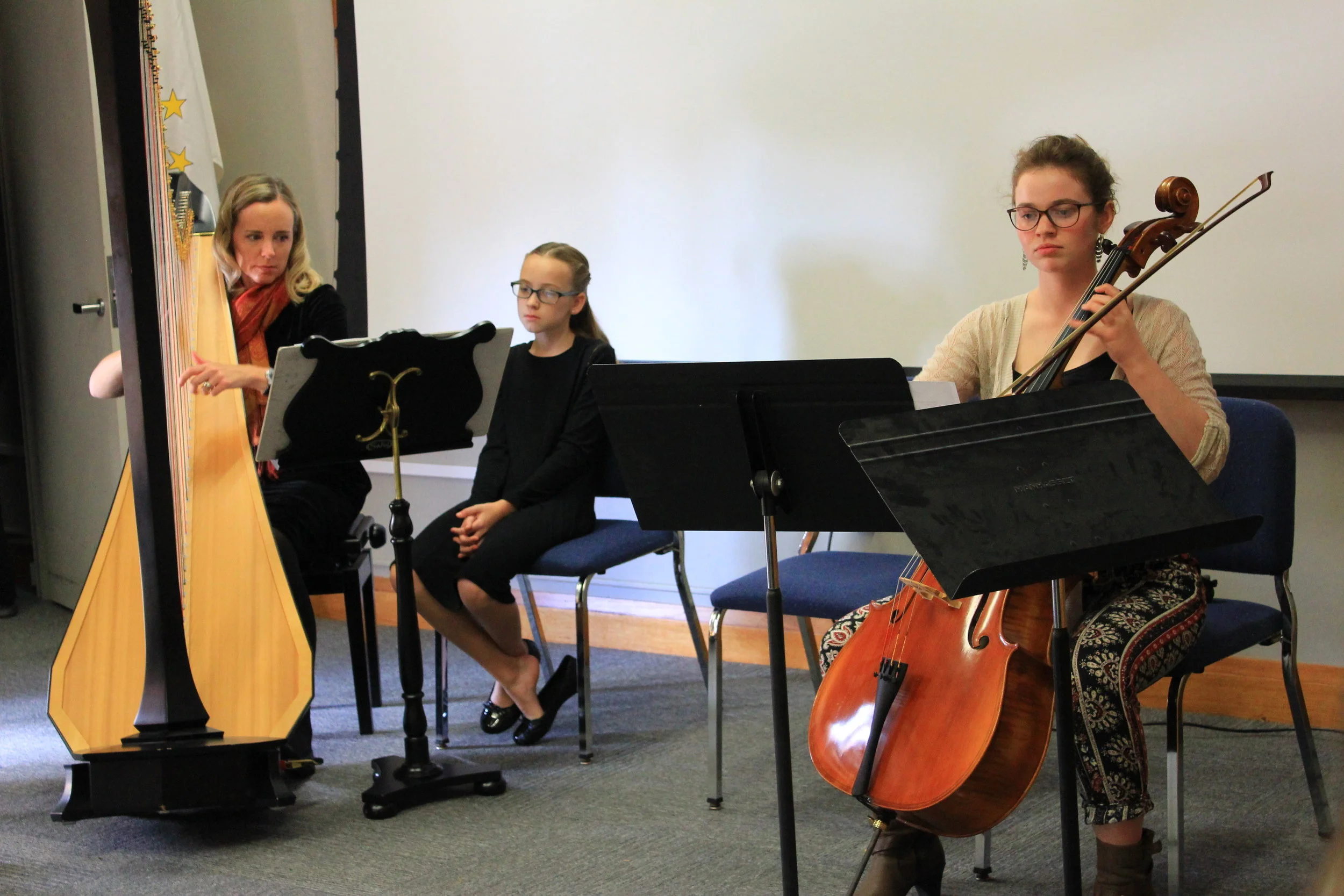Sam Hollister is the artistic director of Aurora. Read his program notes for the latest concert below, and read more about the concert at this link. You can also watch the videos from the concert at this link!
Violin Sonata in E minor, movement I (Mozart)
Mozart’s only minor-key violin sonata, his twenty-first (1778), presents a starkly different character from those seen in his other instrumental works: this is his only instrumental piece in E minor. Written upon the death of Mozart’s mother, Anna Maria Mozart, the piece presents a tempestuousness and tension unseen in Mozart’s earlier works. This timeline is likely no coincidence: historian Hermann Abert writes of the mother-son relationship, “It was a pure and healthy spirit that reigned in the Mozart household… Wolfgang loved and admired [Anna Maria] to distraction.” It was in Paris, on a musical tour with her son, that she suddenly became sick and Mozart penned this unusual work.
The first movement, however, contains contrasts of a much more direct nature. As with all sonatas, this sonata centers around the relationship between two themes (termed “primary” and “secondary.”) The effect of juxtaposing these themes in any sonata is almost always the feeling of conflicting characters. Here, especially, Mozart’s characters are uncommonly defined in their opposition. First, the intense and volatile primary theme:
Then, the more standard, carefree, Mozartian secondary theme:
See if you can track these—and other—remarkably pronounced characters throughout the movement.
Emily Anthony and Sam Hollister rehearse the Mozart E minor Sonata before Contrasts
Unravel for harp and cello (Sam Hollister)
The piece is conceived with an interpretation of the word “unravel” in mind. In particular, I had in mind the idea of water: constantly unraveling from one state to another. The instrumentation is perfect for mimicking the sound of drops, so the suite opens and closes with this sound image in keeping with the cycle. Through the piece's development, we see water develop through several phases: naive, formative drops; a quaint and familiar pond; a ceaseless yet benign creek; a mighty force of nature dissolving and evaporating; and, ultimately, a reincorporation of its unraveled fibers as the cycle restarts. The water image is meant to act as an allegory, with the piece ultimately expressing the fundamental and intangible feeling behind the cycle of something weaving and unravelling over and over again, achieving almost-contradictory, contrasting states along the way.
Cellist Maia Ashley and harpists Alysa and Sarah Smith rehearse Unravel
Selections from Carousel and The King and I (Rodgers & Hammerstein)
“Text-painting” is the notion of writing music to accompany lyrics in such a way that the sounds mimic the meaning and imagery of the words. But what happens when a composer seems to intentionally disregard the text-based cues in a set of lyrics, composing music that evokes something contrasting? In the world of golden-age theater, Rodgers & Hammerstein mastered this technique as a tool for providing another level of character depth and nuance. Listen to what Makayla, our theater expert, says about the composer duo’s habits with this device of “intentional contrast” between words and music.
Soprano Makayla Lane sings during Contrasts
“Romance” from The Gadfly (Shostakovich, arr. Hollister)
Five Pieces for two violins and piano (Shostakovich, arr. Atovmyan)
Emily Anthony introduces our final pieces with a brief lecture on the life of Shostakovich.
Our two works by Shostakovich are what initially inspired the theme “contrasts.” The Five Pieces are delightful parlor tunes in the context of this collection. As you can hear violinist Emily Anthony discuss above, such a light and carefree character is antithetical to the typical idea of Shostakovich’s sound. In this relaxed context, the first movement—Prelude—seems to have a dark and brooding tone, much more serious and somber than the naïve dances and songs that constitute movements two through five.
But it turns out that this first movement originally was part of a soundtrack that Shostakovich wrote for the film The Gadfly. And this film has nothing in common with the sweet, young, pastoral sounds of the Five Pieces. The result is this: the brooding Prelude—a point of deep contemplation for the suite—takes on an opposite function in the soundtrack. By comparison to its dark and stormy neighbors in the soundtrack, the Prelude seems almost clichéd and young: a different identity indeed. To help illustrate this contrast, we begin with one of those potently emotional and moving excerpts from the film: the now-famous “Romance.” The subsequent movement you will hear is the Prelude, opening the Five Pieces. Notice how the movement, when compared to the “Romance,” feels relaxed but, when compared to the movements that follow, feels intensely grave.
•••
Clarinetist Sarah Dennewitz prior to the Contrasts concert








